Stephanie Carroll's Blog: Become a VIP Reader Today!, page 3
October 4, 2016
The Agent Waiting Game
 By Corie Howell via Flickr cc.
By Corie Howell via Flickr cc.I'm in the middle of a lot of waiting games right now. My husband is waiting to hear back about out-of-state jobs, we're waiting to get buyers for our house, and I'm waiting to hear back from literary agents as I’ve been shopping The Binding of Saint Barbara around. It’s been an interesting process when I compare it to how it went with my first novel A White Room.
 By Jim Hutchison via Flickr cc.
By Jim Hutchison via Flickr cc.With that one I wrote dozens of queries and sent them out to hundreds of agents and all I ever got back were rejections. Each time when I got nothing back, I’d return to my novel and ask myself if it was really ready yet and if there was a way to make it better. Then I’d do another round of editing, and I did this for two years, from 2010 to 2012.
By the end of that two years, I felt like I had queried every single possible agent there was who represented my type of book. Finally, I had a lucky break when a top agent from a top house gave me actual feedback about the book—the first agent to ever give feedback—but at the same time he also rejected me. This told me that it was good enough to get his attention, so I took his suggestions and made the changes. Then another lucky break! I was attending my very first writer’s conference, the San Francisco Writer’s Conference, and it just so happened he was one of the agents that was participating in the pitch sessions.
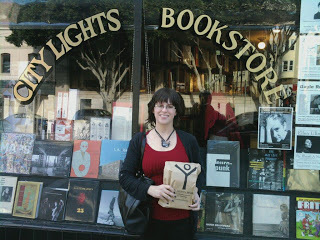 This was during the conference.
This was during the conference.Can you believe my hair? I was trying to look responsible. ;)
So I went to the conference and pitched him, a very nerve-racking two minutes. They had speed dating style pitch sessions where authors get to pitch a bunch of agents with only two minutes and thirty seconds to do so; however, you have even less time than that because you are supposed to leave time to let them ask questions.
The particular agent who I was interested in did things differently. He just asked to read your first couple of pages. It turns out sitting there silently while an agent reads your first page is more uncomfortable and frightening than trying to sell them your book in one sentence. Then he looked up and said, “I’ve read this before.” To which I responded gleefully, “Yes.” Then with a suspicious tone, he asked “What, did you think I wouldn’t remember?” My eyes bulged. “No. No, I hoped you would remember. I hoped you would think it got better.” Heart thudding, nails digging into palms. “All right,” he said. “Send me the manuscript.”
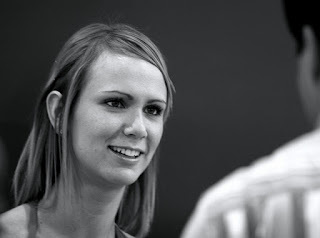 A job interview by Pulpolux !!! via Flickr cc.
A job interview by Pulpolux !!! via Flickr cc.I wasn’t as confident after that suspicious look he gave me, but still more confident about him than the others I’d met. I sent the book to him and he responded with interest, explaining that he and his assistant read the manuscript and liked it but wanted to see a few changes. He made sure it was clear that even if changes were made, it wouldn’t guarantee that he’d take me on as a client. I knew he had to say that just to be safe, but with all the attention and time he gave my book, of course he would take me on ... right? He sent me a word document with a list of requested changes, a list that was three pages long! So I made the changes in about two months and sent it back. This was it. After two long years of hunting agents and after four years of writing and editing my novel, I was going to have representation.
Nope.
He passed. Just like that. It was pretty devastating, but I also saw the positive. This told me that the novel had potential, and I had just gotten free content editing from a big New York City agent.
At that time, the indie publishing revolution was gaining momentum, and I had done some research on it before the conference. After that final rejection, I decided it was time to move forward on my own. It turned out to be the best decision I could have made because after trying to acquire an agent for so long, I was just desperate, and I was willing to give up just about anything to see my book in print. If I had gotten an agent and a publishing contract at that time, I would have agreed to terrible terms and terrible royalties and rights. I would have regretted it.
 My very first signed book.This time around, I’m approaching the process in very much the same manner as before, doing my research, writing the best query I can, but this time I don’t have that desperation. I feel confident that if I don’t interest an agent or publisher, I can always just do it myself. I feel confident that I’m familiar with the industry, the process of getting agents and publishers, and the important parts of negotiating contracts. I actually have a negotiating advantage because of that confidence.
My very first signed book.This time around, I’m approaching the process in very much the same manner as before, doing my research, writing the best query I can, but this time I don’t have that desperation. I feel confident that if I don’t interest an agent or publisher, I can always just do it myself. I feel confident that I’m familiar with the industry, the process of getting agents and publishers, and the important parts of negotiating contracts. I actually have a negotiating advantage because of that confidence.As of right now, I’ve had three requests to see the manuscript, and all within either a day or a week of sending a query. Still, if I get an agent but can’t stand the publishing contract terms I have to choose from, I can still walk away and do it myself.
A couple of disclaimers ...
If you have a first book and are getting nothing but rejections, this is not a thumbs up to just self-publishing. I spent years editing my book, I put it through beta readers on multiple occasions, got the agent feedback, and I hired an editor to give me feedback on the concept and general writing, and that was all before I got into copy editors and whatnot.
A lot of industry types suggest that if you are getting nothing but rejections to move on and write your next book. This is still fantastic advise. By the time you get that second book done, you will have a higher quality of product to sell, and you will know a lot more about the industry just from general research. Then whether you go indie or traditional, having multiple books to start with means a higher chance of making better profits.
Why even bother with the agent process when I had such a positive experience with self-publishing? Well, even though I wouldn’t give up my indie experience, I would prefer a situation where I didn’t have to do as much of the production work so that I could focus on the writing work. This is something that has become especially clear to me recently. I’m really good at doing things myself and making sure they are done right, but I have to put myself into it almost 100 percent, and I have found it difficult to do that and give as much time to writing as I would like.
So where am I on writing books? Check out my Working on a New Series post on that very topic!
Published on October 04, 2016 16:37
August 10, 2016
The Particular Sweet Sadness of Aimee Bender's Magical Realism
I recently discovered the fantastic magical realist/surrealist author Aimee Bender, and I just loved her anthology
The Color Master
and just devoured her fantastic novel
The Particular Sadness of Lemon Cake
.
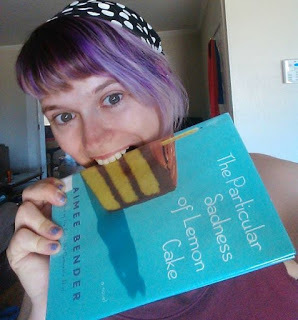
Other posts on this topic: The Difference Between Magical Realism, Surrealism, and SlipstreamTips and Tricks for Writing Magical RealismEverything You Want to Know About Magical RealismPopular Magical Realist Books and Films
I don't usually do book reviews, but I really have to recommend these two and probably anything else Aimee Bender has up her sleeve.
The Color Master is full of unique and fun short stories. Not every single one is magical or surrealist, but they are all great! Also, I really love that these stories are varied in length, some only being like two pages. They are also easy to read, which is a major plus as literary fiction goes. Plus, it's almost as if each one contains an important lessons about the art of writing or about a particular fiction technique. I don't think she intended that, and it might just be me noticing because I'm a writer. Last thing I got to mention is how awesome the cover is! The title words are actually sewn in different color thread, which corresponds to the short stories "Tiger Mending" and "The Color Master."
 Close up of the unique cover design of The Color Master.I was planning on reading maybe one or two of the stories, to just get an idea for her writing style and use of magical realism, but after reading the very first story, I was so hooked!
Close up of the unique cover design of The Color Master.I was planning on reading maybe one or two of the stories, to just get an idea for her writing style and use of magical realism, but after reading the very first story, I was so hooked!
This was "Appleless." First off it's short, which is really smart to start out with in an anthology is you ask me. Secondly, it immediately draws you in with all the unique descriptive language related to apples, and then with the strange way the story about apple obsession and addiction turns into something much darker that is portrayed in such an intriguing way, that you almost don't realize the horror of it at first. What's really interesting is how I wanted to devour the story itself, because of it's scrumptious word-choices and intriguing voice, and that feeling kind of paralleled the obsession of these apple addicted characters.
After that, how could I not want to read everything in this book!
"Tiger Mending" was sweet and strange and fantastic. The story is told from an outsider perspective (fiction technique) whose sister is a master at sewing and is recruited to venture to another country (I want to say India, forgive me if I'm wrong) to do some extremely important but secret work. She insists on taking her sister (the narrator) who in comparison to her is just going nowhere with her life. She works at a fast food joint and doesn't seem to care about self-improvement. Whenever a story is told from an outsider perspective, the story might seem like it's about the character of focus, but really it's about what's happening to the narrator, and it's really interesting to learn about the narrator through her telling of this surreal tiger mending adventure.
Fun side note. It just so happens that around this time, I heard this song called "Tiger" by a band called MyPet, which is fun because MyPet Tiger, get it? Anyway, the song reminded me of this story, so I Tweeted the song and how it reminded me of the story to Aimee Bender, and she responded "Love that!" It's not that the video or lyrics match up to the story. It's more of the unique sound and tiger element. I don't know, it just connected for me.
 Aimee Bender"Faces" was really strange and one of those stories that just kind of makes you think. The ending was what made me feel like there was some sort of important lesson to be learned regarding fiction writing because at the end there wasn't really any resolution or major change for the character.
Aimee Bender"Faces" was really strange and one of those stories that just kind of makes you think. The ending was what made me feel like there was some sort of important lesson to be learned regarding fiction writing because at the end there wasn't really any resolution or major change for the character.
I did some reading and discovered that when it comes to short stories, there is this idea that it's not your job as the writer to solve the characters problems or fix things for them but to just to tell their experience and struggle with the problem. The point is that sometimes as writers we force solutions or change upon our stories and characters because we feel we have to, but some writers say we don't. Aimee Bender shows that it can be done with this one, in my opinion.
"The Fake Nazi" was another one that made me wonder about fiction technique and endings. It was a strange one, but really had a lot to say. It was particularly interesting to get a feeling for what it must have been like for the country of Germany after WWII. As Americans, we don't think about it, but the people of Germany had to keep on living life and had to deal on a mental and emotional level, and many must have struggled with a level of guilt for events they were never involved in or even knew about.
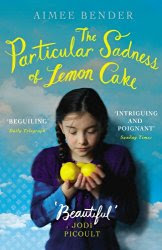 "The Color Master" for which the anthology is named, was a beautiful piece that flooded the mind with fantastic hues and imagery. There was definitely magical realism in this one and a strong use of the distant perspective, another one of those fiction writing techniques I mentioned. It made me want to play with the distant perspective more in my own work. Unlike some of the previous stories, this one was dealing with darker things but in a lighter way, and the ending was just right, bittersweet and satisfying.
"The Color Master" for which the anthology is named, was a beautiful piece that flooded the mind with fantastic hues and imagery. There was definitely magical realism in this one and a strong use of the distant perspective, another one of those fiction writing techniques I mentioned. It made me want to play with the distant perspective more in my own work. Unlike some of the previous stories, this one was dealing with darker things but in a lighter way, and the ending was just right, bittersweet and satisfying.
Speaking of bittersweet and satisfying, The Particular Sadness of Lemon Cake was an award winner and best seller, and it's become one of those few books that spoke to me on a personal level, but first let's talk story, characters, and magical realism.
The story is told from the perspective of Rose Edelstein who on her ninth birthday discovers that she can taste people's emotions in the food they cook. She doesn't just taste surface emotions, but the deeper and darker layer of struggle that a person has in their lives at that moment. She first discovers this in her mother's homemade lemon-chocolate cake, when she tastes her mother's sadness and dissatisfaction with her life in general. Quite a lot to swallow for a nine-year-old!
Although this magical realist gift is the catalyst for the story, it's only one part of the plot line. Really the story is about Rose's relationship with her family and with the world. What I really love about this book is that it maintains a key facet of magical realism, and that's the realism part. A lot of times the realistic side of magical realism gets lost in all the magic, but in this novel, Aimee Bender mastered the realism of the internal and often secret struggles of a "normal" nuclear family, the type that looks like what society says is great on the outside, but really there is struggle, secrets, and heartache deep within the layers.
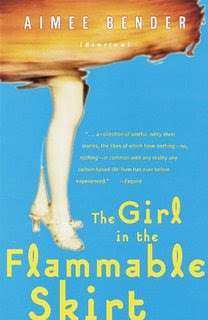
This is why the story really spoke to me personally. The family's struggles were quite similar to struggles I experienced growing up in a nuclear family. Much of what Rose went through on a psychological and emotional level felt so familiar to me. As a child, it's difficult to understand how or why, but you can sense things from family members, like dissatisfaction with life or a pulling away from the world. It was like Bender had magically reached inside of me and pulled out feelings from my own life to instill in this book, almost as if instilling emotions into a lemon chocolate cake.
The other thing I have to say about this book is that the last line was one of my favorites in recent reads, one of those absolutely perfect, satisfying, and yet so bittersweet. Don't read it first because it might give something away. Read the book right, leaving the best for last!
The next one on my list to read is Aimee Bender's The Girl in the Flammable Skirt, so I'll make sure to Tweet or Facebook post what I think. =)
 About Stephanie Carroll
About Stephanie Carroll
Stephanie Carroll is the author of A White Room and "Forget Me Not" featured in Legacy: An Anthology. She blogs about magical realism, her research into the Victorian Era and Gilded Age, writing, and life in general at www.stephaniecarroll.net and at The Unhinged Historian. She also founded Unhinged and Empowered, a blog for Navy wives and girlfriends.
Join her journey with her quarterly newsletter (only four emails a year) for VIP Readers!
Join My Journey!

Other posts on this topic: The Difference Between Magical Realism, Surrealism, and SlipstreamTips and Tricks for Writing Magical RealismEverything You Want to Know About Magical RealismPopular Magical Realist Books and Films
I don't usually do book reviews, but I really have to recommend these two and probably anything else Aimee Bender has up her sleeve.
The Color Master is full of unique and fun short stories. Not every single one is magical or surrealist, but they are all great! Also, I really love that these stories are varied in length, some only being like two pages. They are also easy to read, which is a major plus as literary fiction goes. Plus, it's almost as if each one contains an important lessons about the art of writing or about a particular fiction technique. I don't think she intended that, and it might just be me noticing because I'm a writer. Last thing I got to mention is how awesome the cover is! The title words are actually sewn in different color thread, which corresponds to the short stories "Tiger Mending" and "The Color Master."
 Close up of the unique cover design of The Color Master.I was planning on reading maybe one or two of the stories, to just get an idea for her writing style and use of magical realism, but after reading the very first story, I was so hooked!
Close up of the unique cover design of The Color Master.I was planning on reading maybe one or two of the stories, to just get an idea for her writing style and use of magical realism, but after reading the very first story, I was so hooked!This was "Appleless." First off it's short, which is really smart to start out with in an anthology is you ask me. Secondly, it immediately draws you in with all the unique descriptive language related to apples, and then with the strange way the story about apple obsession and addiction turns into something much darker that is portrayed in such an intriguing way, that you almost don't realize the horror of it at first. What's really interesting is how I wanted to devour the story itself, because of it's scrumptious word-choices and intriguing voice, and that feeling kind of paralleled the obsession of these apple addicted characters.
After that, how could I not want to read everything in this book!
"Tiger Mending" was sweet and strange and fantastic. The story is told from an outsider perspective (fiction technique) whose sister is a master at sewing and is recruited to venture to another country (I want to say India, forgive me if I'm wrong) to do some extremely important but secret work. She insists on taking her sister (the narrator) who in comparison to her is just going nowhere with her life. She works at a fast food joint and doesn't seem to care about self-improvement. Whenever a story is told from an outsider perspective, the story might seem like it's about the character of focus, but really it's about what's happening to the narrator, and it's really interesting to learn about the narrator through her telling of this surreal tiger mending adventure.
Fun side note. It just so happens that around this time, I heard this song called "Tiger" by a band called MyPet, which is fun because MyPet Tiger, get it? Anyway, the song reminded me of this story, so I Tweeted the song and how it reminded me of the story to Aimee Bender, and she responded "Love that!" It's not that the video or lyrics match up to the story. It's more of the unique sound and tiger element. I don't know, it just connected for me.
 Aimee Bender"Faces" was really strange and one of those stories that just kind of makes you think. The ending was what made me feel like there was some sort of important lesson to be learned regarding fiction writing because at the end there wasn't really any resolution or major change for the character.
Aimee Bender"Faces" was really strange and one of those stories that just kind of makes you think. The ending was what made me feel like there was some sort of important lesson to be learned regarding fiction writing because at the end there wasn't really any resolution or major change for the character.I did some reading and discovered that when it comes to short stories, there is this idea that it's not your job as the writer to solve the characters problems or fix things for them but to just to tell their experience and struggle with the problem. The point is that sometimes as writers we force solutions or change upon our stories and characters because we feel we have to, but some writers say we don't. Aimee Bender shows that it can be done with this one, in my opinion.
"The Fake Nazi" was another one that made me wonder about fiction technique and endings. It was a strange one, but really had a lot to say. It was particularly interesting to get a feeling for what it must have been like for the country of Germany after WWII. As Americans, we don't think about it, but the people of Germany had to keep on living life and had to deal on a mental and emotional level, and many must have struggled with a level of guilt for events they were never involved in or even knew about.
 "The Color Master" for which the anthology is named, was a beautiful piece that flooded the mind with fantastic hues and imagery. There was definitely magical realism in this one and a strong use of the distant perspective, another one of those fiction writing techniques I mentioned. It made me want to play with the distant perspective more in my own work. Unlike some of the previous stories, this one was dealing with darker things but in a lighter way, and the ending was just right, bittersweet and satisfying.
"The Color Master" for which the anthology is named, was a beautiful piece that flooded the mind with fantastic hues and imagery. There was definitely magical realism in this one and a strong use of the distant perspective, another one of those fiction writing techniques I mentioned. It made me want to play with the distant perspective more in my own work. Unlike some of the previous stories, this one was dealing with darker things but in a lighter way, and the ending was just right, bittersweet and satisfying.Speaking of bittersweet and satisfying, The Particular Sadness of Lemon Cake was an award winner and best seller, and it's become one of those few books that spoke to me on a personal level, but first let's talk story, characters, and magical realism.
The story is told from the perspective of Rose Edelstein who on her ninth birthday discovers that she can taste people's emotions in the food they cook. She doesn't just taste surface emotions, but the deeper and darker layer of struggle that a person has in their lives at that moment. She first discovers this in her mother's homemade lemon-chocolate cake, when she tastes her mother's sadness and dissatisfaction with her life in general. Quite a lot to swallow for a nine-year-old!
Although this magical realist gift is the catalyst for the story, it's only one part of the plot line. Really the story is about Rose's relationship with her family and with the world. What I really love about this book is that it maintains a key facet of magical realism, and that's the realism part. A lot of times the realistic side of magical realism gets lost in all the magic, but in this novel, Aimee Bender mastered the realism of the internal and often secret struggles of a "normal" nuclear family, the type that looks like what society says is great on the outside, but really there is struggle, secrets, and heartache deep within the layers.

This is why the story really spoke to me personally. The family's struggles were quite similar to struggles I experienced growing up in a nuclear family. Much of what Rose went through on a psychological and emotional level felt so familiar to me. As a child, it's difficult to understand how or why, but you can sense things from family members, like dissatisfaction with life or a pulling away from the world. It was like Bender had magically reached inside of me and pulled out feelings from my own life to instill in this book, almost as if instilling emotions into a lemon chocolate cake.
The other thing I have to say about this book is that the last line was one of my favorites in recent reads, one of those absolutely perfect, satisfying, and yet so bittersweet. Don't read it first because it might give something away. Read the book right, leaving the best for last!
The next one on my list to read is Aimee Bender's The Girl in the Flammable Skirt, so I'll make sure to Tweet or Facebook post what I think. =)
 About Stephanie Carroll
About Stephanie CarrollStephanie Carroll is the author of A White Room and "Forget Me Not" featured in Legacy: An Anthology. She blogs about magical realism, her research into the Victorian Era and Gilded Age, writing, and life in general at www.stephaniecarroll.net and at The Unhinged Historian. She also founded Unhinged and Empowered, a blog for Navy wives and girlfriends.
Join her journey with her quarterly newsletter (only four emails a year) for VIP Readers!
Join My Journey!
Published on August 10, 2016 11:37
July 18, 2016
The Difference Between Magical Realism, Surrealism, and Slipstream
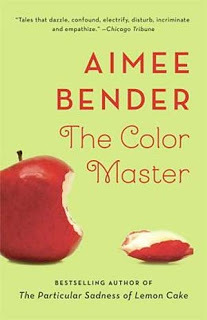 I've been reading Aimee Bender's The Color Master, and it's just fantastic, so I started doing some research on her, and I noticed that some people said she does magical realism and others say she does surrealism and all of a sudden slipstream was in there. So I did what I always do in these circumstances - research spree! Here's what I found:
I've been reading Aimee Bender's The Color Master, and it's just fantastic, so I started doing some research on her, and I noticed that some people said she does magical realism and others say she does surrealism and all of a sudden slipstream was in there. So I did what I always do in these circumstances - research spree! Here's what I found:What is Magical Realism or Magic Realism?Okay, this one I already knew as I work with it in my own fiction. Magical realism or magic realism is a genre of fiction and film that blends magical elements with reality in a way that blurs the edges until seamless. The stories are generally, but not always, characterized by a unique tone and atmosphere of wonder, magic, mystery, or just a sense of strangeness.
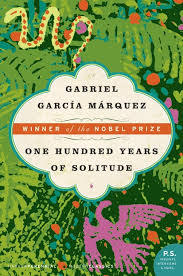 Magical realism originated in Latin-America and is closely tied with Catholicism and religious blending often seen in Latin American culture. According to The Encyclopedia Britannica: “Magic realism, chiefly Latin-American narrative strategy that is characterized by the matter-of-fact inclusion of fantastic or mythical elements into seemingly realistic fiction. Although this strategy is known in the literature of many cultures in many ages, the term magic realism is a relatively recent designation, first applied in the 1940s by Cuban novelist Alejo Carpentier, who recognized this characteristic in much Latin-American literature. . ."
Magical realism originated in Latin-America and is closely tied with Catholicism and religious blending often seen in Latin American culture. According to The Encyclopedia Britannica: “Magic realism, chiefly Latin-American narrative strategy that is characterized by the matter-of-fact inclusion of fantastic or mythical elements into seemingly realistic fiction. Although this strategy is known in the literature of many cultures in many ages, the term magic realism is a relatively recent designation, first applied in the 1940s by Cuban novelist Alejo Carpentier, who recognized this characteristic in much Latin-American literature. . ."Notice it says that these techniques have been around and in many cultures for many centuries but it wasn't really designated into a genre until the 1940s and it was in response to these Latin American authors.
It goes onto say: "Prominent among the Latin-American magic realists are the Colombian Gabriel García Márquez, the Brazilian Jorge Amado, the Argentines Jorge Luis Borges and Julio Cortazar, and the Chilean Isabel Allende.”
For a really in-depth look at magical realism, check out my posts Everything You Want to Know About Magical Realism, Popular Magical Realism Books & Films and Tips and Tricks for Writing Magical Realism.
What is Surrealism in Fiction i.e. Surrealist Literature?
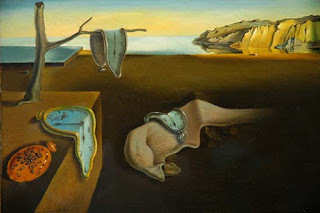 The Persistence of Memory, oil on canvas, by Salvador Dalí, …According to the Encyclopedia Britannica entry on Surrealism, the movement came out of the period between World War I and World War II and was an expression of frustration with the way rationalism had destroyed the world. Thus these artists' and authors' creations destroyed reason with fantastical and nonsensical imagery and ideas.
The Persistence of Memory, oil on canvas, by Salvador Dalí, …According to the Encyclopedia Britannica entry on Surrealism, the movement came out of the period between World War I and World War II and was an expression of frustration with the way rationalism had destroyed the world. Thus these artists' and authors' creations destroyed reason with fantastical and nonsensical imagery and ideas. According to What is Surrealism in Literature, the poet Andre Breton founded and propelled the genre by publishing The Manifesto of Surrealism in 1924, Paris.
Surrealism deals a lot with Freudian theories like free association. Artists and authors try to blend the unconscious mind with the conscious. They use a lot of juxtapositions and contrasting imagery and metaphor. What is Surrealism in Literature also says that surrealism challenges readers to tap into the sub-conscious, think beyond what society has to say, and look inside one's self for answers. It creates fantastical, logic-defying, and dreamlike worlds using poetic styles and techniques instead of traditional linear plotlines.
Check out 10 Essential Surrealist Books for Everyone for some examples.
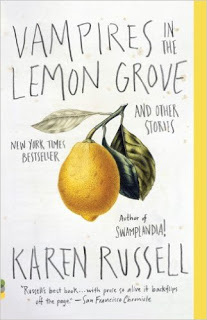 What About Slipstream?Slipstream is another genre that came up in my research. According to Slipstream Goes Mainstream on the Wall Street Journal sci-fi author Bruce Sterling coined the term in 1989 to describe fiction that "slips" in and out of a variety of genres, most commonly sci-fi, fantasy, and horror, creating work that "makes you feel strange."
What About Slipstream?Slipstream is another genre that came up in my research. According to Slipstream Goes Mainstream on the Wall Street Journal sci-fi author Bruce Sterling coined the term in 1989 to describe fiction that "slips" in and out of a variety of genres, most commonly sci-fi, fantasy, and horror, creating work that "makes you feel strange."The article refers to many authors that are also known for their magical realism or surrealism, including Kelly Link, Aimee Bender, and Karen Russell. However in a USA Today interview with Karen Russell, the author says she's not sure if the term magical realism works for her writings, and that she finds it difficult to put any label on her work.
For more on this, the article Oh Slippery Slipstream has a much more in-depth analysis of the origins of the term in late 1980s sci-fi community that is quite interesting.
Check out The Guardian's Top 10 Slipstream Books, the Best of Slipstream Stories, or Slipstream Resources for some examples.
What's the Difference Between Magical Realism, Surrealism, and Slipstream?
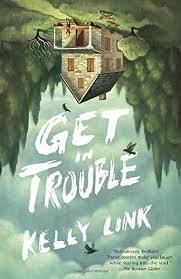 Obviously, each genre/technique has a different origin story and thus different characteristics. Magical Realism comes out of Latin American countries where natives cultures blended their old belief systems with Catholicism over time. This led to a culture where the idea that magic can blend with reality is really not a strange idea at all.
Obviously, each genre/technique has a different origin story and thus different characteristics. Magical Realism comes out of Latin American countries where natives cultures blended their old belief systems with Catholicism over time. This led to a culture where the idea that magic can blend with reality is really not a strange idea at all. Magical Realism also maintains a sense of reality while Surrealism and Slipstream destroy it. It seems like there is a general feeling that magical realism is also lighter in nature. The interviewer in the USA Today interview with Karen Russell said Russell's work seemed like it dealt too much with death to be considered magical realism. As someone who writes darker magical realism, I'm not sure if I agree with this, but it's something to consider.
Surrealism, like slipstream, defies logic, but it does it in a very specific way, by using contradictory imagery and ideas in an effort to spark something within the reader's or author's subconscious mind. In an interview with Aimee Bender on Distortion comes From the Truth, Bender says that both magical realism and surrealism apply to her work, but that surrealism is dealing more with juxtapositions and moving away from what makes sense. It also moves away from using traditional plotlines and timelines, which is something Bender is known for.
Now slipstream, also defies logic and reason, but seems to go even further, not having the specific constraints of surrealism. It was born out of the need for a word to describe a type of fiction that didn't quite fit into the sci-fi genre or any other genre because it borrowed from so many. The only thing that seems to link slipstream works together is that they are all very fantastical and defying logic.
It's kind of hard to determine the difference between these genres mainly because when you seek out an example, you find books that are considered as being all three of these genres, and I'm no expert. Keep in mind that this is what I've concluded are the differences based on this research. I think to really find out for sure, we are all going to have to run and read some of these examples.
What do you know about these genres? What can your research or experience tell us?
Published on July 18, 2016 11:31
July 6, 2016
Bertillon Records: The Victorian Fingerprints
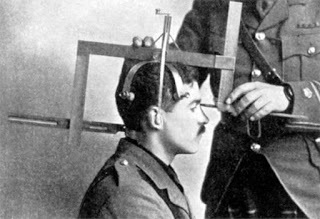 Measurements taken for the Bertillon RecordIt always makes me particularly sad when I have to cut out a scene that has a really neat bit of historical research in it. One of those deleted scenes from The Binding of Saint Barbara (my novel in progress as of July 2016), involved The Bertillon Record.
Measurements taken for the Bertillon RecordIt always makes me particularly sad when I have to cut out a scene that has a really neat bit of historical research in it. One of those deleted scenes from The Binding of Saint Barbara (my novel in progress as of July 2016), involved The Bertillon Record.For those of you who like crime fiction or detective stories, you will really enjoy this. Before fingerprinting, they had a different kind of record system to keep track of people in the penal system.
These records involved taking down detailed information about the person, things like height, weight, physical, and facial characteristics, etc. It also included a photograph, i.e. the first mug shots.
According to Bertillon System of Criminal Identification on The National Law Enforcement Museum, a French criminologist named Alphonse Bertillon came up with the system in 1879, and it was introduced in the United States when the Illinois State Penitentiary warden, R.W. McClaughry, translated the system from French to English. It quickly became widely used.
However, by the turn of the century, fingerprinting was in use and being included in the Bertillon Record. After an incident of mixing up two prisoners with the same name and remarkably similar Bertillon Records, fingerprints began taking over the identification system.
Mental Floss has a fantastic article on The Bertillon Record as do these others:The Bertillon System on Visible ProofsAlphonse Bertillon: The Father of Criminal IdentificationAlphonse Bertillon and the Identification of Persons (1880-1914)Anthropometry on New World Encyclopedia
Published on July 06, 2016 16:22
June 29, 2016
The Binding of Saint Barbara
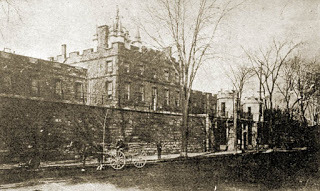
Based on the true story of the first death by electrocution, The Binding of Saint Barbara tells the controversial story through the eyes of the warden’s family who lived in Auburn Prison during the year William Kemmler awaited his death in 1890.
If Charlotte Durston ever wants to escape her existence as a cloistered warden’s daughter who picks at her nails and talks out loud to herself, she has to either prove to her parents that she is responsible enough to attend college or capture the attention of the love of her life, a prison guard named Daniel McNaughton.
She actually has a chance to do both when her mother takes her to greet and minister to the newest inmate, who is guarded exclusively by Daniel, but the moment she gets too close, the murderer attacks and attempts to strangle her to death.
Afterwards, her mother is determined to convert the condemned man while her father has gone to Manhattan for the appeal hearings. It seems like everyone cares more about her attacker than they do her until she meets a young inmate named Michael Bradley who shows her the respect she’s longed for her entire life. When she discovers he has information that could change the course of the appeals, Charlotte sees another opportunity to prove herself.
Incorporating historical newspaper articles and “the battle of currents” between Thomas Edison, George Westinghouse, and Nikola Tesla—The Binding of Saint Barbara mesmerizes readers by interweaving history with magical realism to create a seamless exploration of the good and evil in us all.
Published on June 29, 2016 14:58
Asthma in the Nineteenth Century Gilded Age

So if you follow me on Facebook or Twitter, you already know that as of June 2016, my novel The Binding of Saint Barbara is in it's final stages, and I have officially begun shopping it around. Eeeee, so excited. Anyway, it may surprise some that even in these late stages some significant content changes can still occur, and one interesting change that has happened as a result of my last edit is the decision to give one of my characters asthma.
The character I'm giving asthma to is guard Daniel McNaughton, who is based on a real person. In my book and in real life, this guard was the primary day keeper for the condemned ax-murderer William Kemmler who became the first man to die in the electric chair in 1890 Auburn Prison, Auburn New York.
The real Daniel McNaughton was an older gentleman, but in the story I have made him young and the initial object of Charlotte Durston's affection. He is a a man who is trying to make something of himself. His hope is to have this appointment guarding William Kemmler turn into a promotion. He has a personal stake in this because his father was a drunk and hardly could keep a job, forcing Daniel's mother to work until she died. Daniel has committed himself to giving no attention to women or courting until he has established a career that can support a family.
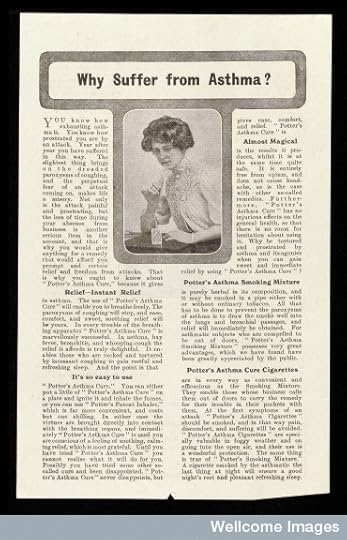
Plus, he wants a woman who is like is mother, strong and capable, neither of which Charlotte can manage, so she is the last person who attracts his attention. Nevertheless, in her efforts to stand out to him, she gets herself attacked by the condemned murderer while on Daniel's watch. This leaves Daniel's future in jeopardy as her father now wants to blame someone for the attack. It also forces Daniel to keep a special eye out to make sure Charlotte doesn't get into anymore trouble.
My first set of beta readers haven't responded to Daniel the way I thought they might. They don't really seem to have strong feelings for him one way or the other so I was looking for a way to make him more interesting or sympathetic and as I read back through the manuscript after my beta readers, I realized there are many scenes where Daniel is put into positions where he is out of breath, and it occurred to me that his situation would be a lot worse if being out of breath was a really bad thing for him. (Always make things harder for your characters!)
Now all his stakes are higher. His job is such a big deal because he's been hiding his asthma and normally wouldn't be able to get a job like prison guard because of it. Plus, every time he has to do something physically or emotionally intense, he's in danger of not only getting exposed but of getting an attack so bad he can't recover. It's added depth to his backstory and personality in general, not to mention an fascinating historical footnote!
 Obviously, they didn't have albuterol inhalers in the nineteenth century, so what did they do for asthma? There were many interesting treatments like ozone paper, but the two main remedies for asthma were black coffee and stramonium, which was smoked through non-tobacco cigarettes and or from powders. The latter is what I used in the book. I have Daniel light the powder and inhale it that way.
Obviously, they didn't have albuterol inhalers in the nineteenth century, so what did they do for asthma? There were many interesting treatments like ozone paper, but the two main remedies for asthma were black coffee and stramonium, which was smoked through non-tobacco cigarettes and or from powders. The latter is what I used in the book. I have Daniel light the powder and inhale it that way.I also learned that chronic coughing is an important symptom of asthma, which I didn't know and which actually led me to my doctor who said my post-bronchitis cough might actually be a sign of adult onset asthma, something that is common where I live in the Central Valley of California.
One account from Divine Stramonium: The Rise and Fall of Smoking for Asthma, which cited Marcel Proust: letters to his mother, 1956, was really interesting. It came from a letter by Dr. Adrien Proust father of the novelist Marcel Proust:
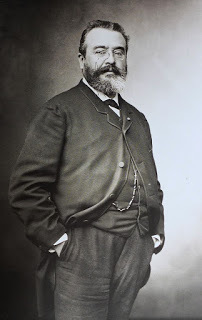 Dr. Adrien Proust by Paul Nadar
Dr. Adrien Proust by Paul Nadar‘Misery of miseries or mystery of mysteries?’ That is the title of a chapter in one of Dumas’s novels, which would apply very well to me at the moment. Yesterday after I wrote to you I had an attack of asthma and incessant running at the nose, which obliged me to walk all doubled up and light anti-asthma cigarettes at every tobacconist’s I passed, etc. And what’s worse, I haven’t been able to go to bed till midnight, after endless fumigations, and it’s three or four hours after a real summer attack, an unheard of thing for me.
Here are the main resources I used to find this information and there's some really neat stuff about this in these articles so check them out:
The History of Asthma Medicine
19th Century Asthma Remedies
Divine Stramonium: The Rise and Fall of Smoking for Asthma
Evolution of Back Door Bronchodilator
1800-1985: Asthma Cigarettes
Asthma Cigarettes
Published on June 29, 2016 14:58
The First Death by Electrocution & My Novel-in-Progress
For the last several years I've been working on a story surrounding the first death by electrocution, the history of which is what inspired the novel. Sign up for my newsletter to be notified of when it comes out.
William Kemmler, a confessed murderer, became the first man executed via the electric chair in the basement of Auburn New York's state prison in 1890. During the sixteen months the condemned man stayed at Auburn Prison, Warden Charles Durston, his wife Gertrude, and the prisoner's primary guard Daniel McNaughton grew close to the prisoner. Daniel read to him from the Bible as well as other books and Gertrude taught him to read and write in addition to her evangelizing.
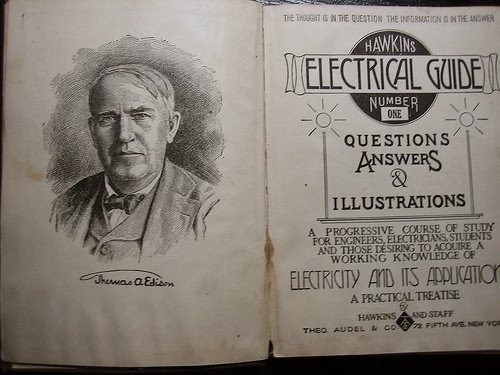 photo credit: TaranRampersad via photopin ccDespite the extremity of his crime and his immediate confession, prominent lawyer and orator W. Bourke Cockran suspiciously offered to represent William Kemmler without charge and make an appeal on the grounds of cruel and unusual punishment. All of society speculated the prominent businessman George Westinghouse was the real benefactor because it had been decided that his company's electrical current, Alternating Current, would be used for the new electric chair. At the time, Westinghouse's Alternating Current (AC) could travel farther than Thomas Edison’s Direct Current (DC) but it was more expensive, so Edison wasn't worried until his former employee Nikola Tesla joined Westinghouse and patented an invention that would make AC run in an efficient, cost-effective manner.
photo credit: TaranRampersad via photopin ccDespite the extremity of his crime and his immediate confession, prominent lawyer and orator W. Bourke Cockran suspiciously offered to represent William Kemmler without charge and make an appeal on the grounds of cruel and unusual punishment. All of society speculated the prominent businessman George Westinghouse was the real benefactor because it had been decided that his company's electrical current, Alternating Current, would be used for the new electric chair. At the time, Westinghouse's Alternating Current (AC) could travel farther than Thomas Edison’s Direct Current (DC) but it was more expensive, so Edison wasn't worried until his former employee Nikola Tesla joined Westinghouse and patented an invention that would make AC run in an efficient, cost-effective manner.
The commission that discussed the best means of replacing hanging executions had asked Thomas Edison if electricity would be a painless method. Despite the fact that Edison openly disapproved of capital punishment, he wrote to the commission that an electrical current would cause instant and painless death but only if AC current were used. Edison knew that if Alternating Current became the new means of capital punishment, the public would come to associate it with death and refuse it's use in residential homes and businesses.
The two-week appeal took place in Manhattan and turned into quite the spectacle as both sides paraded out dramatic testimony and famous guests including Thomas Edison himself. In the end, both sides had spent more time arguing over whether or not one current was safer than the other and failed to argue why death by electrocution would be cruel and unusual. The judge had no choice but to reject the appeal.
If Edison truly planned to destroy AC current, it appeared to be working. In the months prior to the electrocution, a lineman was burned to death after falling into several AC power lines. In response, the city approved action to tear down all the AC wires in what would later be called "The Electric Wire Panic." In spite of the horror displayed over the lineman's death, William Kemmler's execution remained on schedule.
A short time before the electrocution, papers reported that William Kemmler had claimed to have seen a vision of Jesus in his prison cell. Suddenly, the prison chaplain and a local reverend became close confidants with William Kemmler and saw to his conversion, baptism, and final prayers before death.
Warden Durston had to keep the day of the execution a secret, but word got out and droves of reporters and spectators crowded outside the gates. Gertrude left Auburn Prison the day before, telling William she couldn't stand to be there with what was to come. Likewise, Daniel McNaughton had explained to William, he could not be present to witness his new friend's demise.
When he entered Auburn Prison, William Kemmler was a drunk who had maintained a grizzly appearance and demeanor, but by the time he sat down in the wired chair, he had combed his hair, trimmed his beard, and wore a suit and bow-tie. He sat tall and spoke without fear when he said, "Now take your time and do it right, Warden. There is no rush. I don't want to take any chances on this thing you know." Front entrance to Auburn Prison photo credit: C Jill Reed via photopin cc
Front entrance to Auburn Prison photo credit: C Jill Reed via photopin cc
Later headlines would read "The Auburn Tragedy," and "Horrible Scenes Attending the Execution." The papers speculated as to what had gone wrong, suggesting faulty machinery, mistakes regarding the current, and sabotage, but nothing ever came to light. Despite the initial shock, the same attendees who had had fainted or fled the room reported the execution as a success and the electric chair became the official means of capital punishment in the state of New York. With time, the rest of the country followed.
Although Thomas Edison appeared to have gone to great lengths to sabotage AC current and come up with his own invention to reduce the cost of electricity, Tesla and Westinghouse prevailed landing the contract to electrically light the 1893 World's Columbia Exposition in Chicago and not long after they won the coveted Niagara contract, culminating the symbolic victory of AC over DC. Meanwhile, Edison General's top men decided to merge the company with Thomas-Houston and drop Edison's name, becoming General Electric. It was reported that Edison did not know he was being pushed out until the papers announced it. Thomas Edison ultimately abandoned the field of electric lighting and pursued the filming industry, eventually filming an electric chair execution.
There is so much more to this history, and I will continue to share bits and pieces of it with you in future newsletters and even more via my novel-in-progress The Binding of Saint Barbara, which will be the first novel VIP Readers get to help with, so stay tuned!
William Kemmler, a confessed murderer, became the first man executed via the electric chair in the basement of Auburn New York's state prison in 1890. During the sixteen months the condemned man stayed at Auburn Prison, Warden Charles Durston, his wife Gertrude, and the prisoner's primary guard Daniel McNaughton grew close to the prisoner. Daniel read to him from the Bible as well as other books and Gertrude taught him to read and write in addition to her evangelizing.
 photo credit: TaranRampersad via photopin ccDespite the extremity of his crime and his immediate confession, prominent lawyer and orator W. Bourke Cockran suspiciously offered to represent William Kemmler without charge and make an appeal on the grounds of cruel and unusual punishment. All of society speculated the prominent businessman George Westinghouse was the real benefactor because it had been decided that his company's electrical current, Alternating Current, would be used for the new electric chair. At the time, Westinghouse's Alternating Current (AC) could travel farther than Thomas Edison’s Direct Current (DC) but it was more expensive, so Edison wasn't worried until his former employee Nikola Tesla joined Westinghouse and patented an invention that would make AC run in an efficient, cost-effective manner.
photo credit: TaranRampersad via photopin ccDespite the extremity of his crime and his immediate confession, prominent lawyer and orator W. Bourke Cockran suspiciously offered to represent William Kemmler without charge and make an appeal on the grounds of cruel and unusual punishment. All of society speculated the prominent businessman George Westinghouse was the real benefactor because it had been decided that his company's electrical current, Alternating Current, would be used for the new electric chair. At the time, Westinghouse's Alternating Current (AC) could travel farther than Thomas Edison’s Direct Current (DC) but it was more expensive, so Edison wasn't worried until his former employee Nikola Tesla joined Westinghouse and patented an invention that would make AC run in an efficient, cost-effective manner.The commission that discussed the best means of replacing hanging executions had asked Thomas Edison if electricity would be a painless method. Despite the fact that Edison openly disapproved of capital punishment, he wrote to the commission that an electrical current would cause instant and painless death but only if AC current were used. Edison knew that if Alternating Current became the new means of capital punishment, the public would come to associate it with death and refuse it's use in residential homes and businesses.
The two-week appeal took place in Manhattan and turned into quite the spectacle as both sides paraded out dramatic testimony and famous guests including Thomas Edison himself. In the end, both sides had spent more time arguing over whether or not one current was safer than the other and failed to argue why death by electrocution would be cruel and unusual. The judge had no choice but to reject the appeal.
If Edison truly planned to destroy AC current, it appeared to be working. In the months prior to the electrocution, a lineman was burned to death after falling into several AC power lines. In response, the city approved action to tear down all the AC wires in what would later be called "The Electric Wire Panic." In spite of the horror displayed over the lineman's death, William Kemmler's execution remained on schedule.
A short time before the electrocution, papers reported that William Kemmler had claimed to have seen a vision of Jesus in his prison cell. Suddenly, the prison chaplain and a local reverend became close confidants with William Kemmler and saw to his conversion, baptism, and final prayers before death.
Warden Durston had to keep the day of the execution a secret, but word got out and droves of reporters and spectators crowded outside the gates. Gertrude left Auburn Prison the day before, telling William she couldn't stand to be there with what was to come. Likewise, Daniel McNaughton had explained to William, he could not be present to witness his new friend's demise.
When he entered Auburn Prison, William Kemmler was a drunk who had maintained a grizzly appearance and demeanor, but by the time he sat down in the wired chair, he had combed his hair, trimmed his beard, and wore a suit and bow-tie. He sat tall and spoke without fear when he said, "Now take your time and do it right, Warden. There is no rush. I don't want to take any chances on this thing you know."
 Front entrance to Auburn Prison photo credit: C Jill Reed via photopin cc
Front entrance to Auburn Prison photo credit: C Jill Reed via photopin ccLater headlines would read "The Auburn Tragedy," and "Horrible Scenes Attending the Execution." The papers speculated as to what had gone wrong, suggesting faulty machinery, mistakes regarding the current, and sabotage, but nothing ever came to light. Despite the initial shock, the same attendees who had had fainted or fled the room reported the execution as a success and the electric chair became the official means of capital punishment in the state of New York. With time, the rest of the country followed.
Although Thomas Edison appeared to have gone to great lengths to sabotage AC current and come up with his own invention to reduce the cost of electricity, Tesla and Westinghouse prevailed landing the contract to electrically light the 1893 World's Columbia Exposition in Chicago and not long after they won the coveted Niagara contract, culminating the symbolic victory of AC over DC. Meanwhile, Edison General's top men decided to merge the company with Thomas-Houston and drop Edison's name, becoming General Electric. It was reported that Edison did not know he was being pushed out until the papers announced it. Thomas Edison ultimately abandoned the field of electric lighting and pursued the filming industry, eventually filming an electric chair execution.
There is so much more to this history, and I will continue to share bits and pieces of it with you in future newsletters and even more via my novel-in-progress The Binding of Saint Barbara, which will be the first novel VIP Readers get to help with, so stay tuned!
Published on June 29, 2016 14:57
Inspiration for my historical novel A White Room
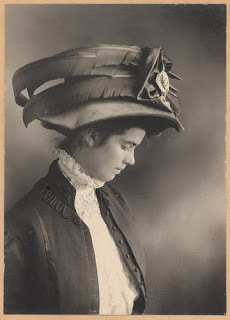 photo credit: deflam via photopin ccI first thought about writing a book in the post-Victorian/Industrial Revolution (1900 through 1910) time period while in college. We briefly learned about housewives who were so bored during the Industrial Revolution, as all their responsibilities were taken over by technology like the washing machine. The New Woman was also emerging, and many women felt lost in the traditional Victorian expectations of women and the new rising independence and strength of the new woman who worked, lived on her own, socialized without a chaperone, etc. Suddenly, there was an influx of women with anxiety, depression or just going crazy. Remember when you learned about hysteria and read The Yellow Wallpaper in high school or college? Psychology was also a semi new medical field and on the rise so diagnosing various problems as
photo credit: deflam via photopin ccI first thought about writing a book in the post-Victorian/Industrial Revolution (1900 through 1910) time period while in college. We briefly learned about housewives who were so bored during the Industrial Revolution, as all their responsibilities were taken over by technology like the washing machine. The New Woman was also emerging, and many women felt lost in the traditional Victorian expectations of women and the new rising independence and strength of the new woman who worked, lived on her own, socialized without a chaperone, etc. Suddenly, there was an influx of women with anxiety, depression or just going crazy. Remember when you learned about hysteria and read The Yellow Wallpaper in high school or college? Psychology was also a semi new medical field and on the rise so diagnosing various problems aspsychological became popular around this time.
This was the first time the thought of a crazy housewife came to mind, but I found the time period intriguing as well because even as a history student, I couldn’t think of a visual image of period clothing. People can't think, oh yeah that's what they used to wear, which they can say about the 1920s or 1950s. I don't know why that grabbed my interest but it did. Nevertheless, at the time, the idea was fleeting, and I was preparing a science fiction story in my head.
 photo credit: T|ng~ via photopin ccMeanwhile, I finished my last year in college, which was a gruesome period of stress and being overworked not only from school but from my inability to say no to any new project. At one point I got so stressed I had repetitive burn outs. I felt obligated to give everything I had in every direction, and I desired freedom from it all. I sometimes thought about how freeing it would be to live without any obligation whatsoever, but not only is such a thing unattainable it is unfeasible. There’s always an obligation even if it is just getting food and shelter.
photo credit: T|ng~ via photopin ccMeanwhile, I finished my last year in college, which was a gruesome period of stress and being overworked not only from school but from my inability to say no to any new project. At one point I got so stressed I had repetitive burn outs. I felt obligated to give everything I had in every direction, and I desired freedom from it all. I sometimes thought about how freeing it would be to live without any obligation whatsoever, but not only is such a thing unattainable it is unfeasible. There’s always an obligation even if it is just getting food and shelter.When I graduated college and moved to a new state, I left behind everything I was connected to and overwhelmed with, and for the first time I had some freedom to just be, but that freedom was unbearable. I had this overwhelming desire to do something of meaning while simultaneously wanting to do nothing.
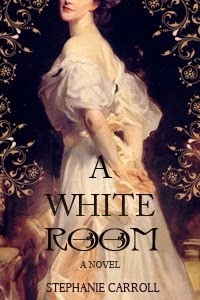 One day I was going over these thoughts while in my new one-man white box of a shower, and I released my feelings through a type of free-write in my head, which ultimately grew into the core idea for A White Room.
One day I was going over these thoughts while in my new one-man white box of a shower, and I released my feelings through a type of free-write in my head, which ultimately grew into the core idea for A White Room.I imagined a white room that represented the obligation of life and inside there was a woman in a white flowing dress. Outside the room lay freedom but outside one does not fulfill the obligations of life that keep you alive. The tragic thing about this place is in the end the woman has to and always chooses obligation over liberation to maintain her life and the lives of people who rely on her. However, she questions how much longer she can stand the prison before she is willing to sacrifice it all for those few moments of freedom. Thus was born the idea of A White Room.
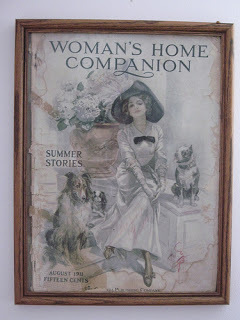 photo credit: Caitfoto via photopin ccIt became a period piece because the woman I imagined in the room wore a historical dress. As I said before, I couldn't connect it with a specific time. When I looked at period clothing it resembled garments worn in 1914, think Titanic, but I ultimately chose to set the story in 1901 to ensure my character could be completely isolated. I did not want her to have access to phones, which were more common in 1914.
photo credit: Caitfoto via photopin ccIt became a period piece because the woman I imagined in the room wore a historical dress. As I said before, I couldn't connect it with a specific time. When I looked at period clothing it resembled garments worn in 1914, think Titanic, but I ultimately chose to set the story in 1901 to ensure my character could be completely isolated. I did not want her to have access to phones, which were more common in 1914.Initially, all I knew was the white room was going to drive her insane and through my research the story of her childhood and escape from insanity grew into Emeline Evans Dorr, the insane perfection-seeker who only wanted to be a nurse but sacrificed it all to serve her family but in the end finds freedom after all. The book is called A White Room instead of The White Room because anyone can have a white room of their own. Later the classic short story "The Yellow Wallpaper" by Charlotte Perkins Gilman would play a large role in the development of this inspiration.
Amazon US Review Carroll does a superb job of pulling the reader in from the start. We feel as if we are Emma, her thoughts and actions and worries so pervasive to our own minds. Just as the house seeps in to our bones and we feel it closing around us as Emma does, as we feel the creepiness making the hair on our arms raise, just as we ourselves might go mad out of anger for Emma's life, a redeeming break happens. The light enters in and Emma shines. - Erin Al-Mehairi
Sign Up for the scoop you won't find online!
Published on June 29, 2016 14:56
The Yellow Wallpaper Reading and Explanation
My novel
A White Room
was inspired by "The Yellow Wallpaper" by Charlotte Perkins Gilman. In these two videos I read the entire short story and give some backstory and history too.
For more on "The Yellow Wallpaper" check out how the short story inspired my novel and my article on how the story reflects women's situation a the time in Gothic Horror or Women's Reality on author Essie Fox's blog The Virtual Victorian.
Reading of "The Yellow Wallpaper" by Charlotte Perkins Gilman.
Some History and Backstory about "The Yellow Wallpaper" by Charlotte Perkins Gilman.
If you've enjoyed these videos about The Yellow Wallpaper, consider checking out my novel A White Room.
For more on "The Yellow Wallpaper" check out how the short story inspired my novel and my article on how the story reflects women's situation a the time in Gothic Horror or Women's Reality on author Essie Fox's blog The Virtual Victorian.
Reading of "The Yellow Wallpaper" by Charlotte Perkins Gilman.
Some History and Backstory about "The Yellow Wallpaper" by Charlotte Perkins Gilman.
If you've enjoyed these videos about The Yellow Wallpaper, consider checking out my novel A White Room.
Published on June 29, 2016 14:56
The History in Historical Women's Fiction "A White Room"
THE HISTORY BEHIND A WHITE ROOM FROM THE AUTHOR
I spent six months conducting the initial research for A White Room and continued that research whenever uncertainties and curiosities arose. Anytime I work on the book, I end up looking up historical facts to make sure I am not missing anything.
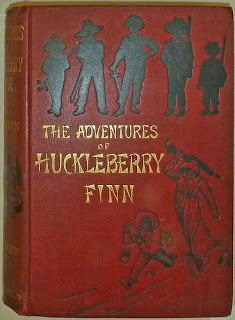 photo credit: jondresner via photopin ccLet’s start with setting. A White Room is set in Labellum, Missouri, which is a fictional town I made up, but it’s a town inspired by Hannibal, Missouri – Mark Twain (Samuel Clemens) and Titanic’s Molly Brown came from Hannibal. It’s believed Mark Twain set his Huckleberry Finn and Tom Sawyer novels in Hannibal although he did not name the town that in the books. Mark Twain visited Hannibal up until he died. The last time he visited was 1902.
photo credit: jondresner via photopin ccLet’s start with setting. A White Room is set in Labellum, Missouri, which is a fictional town I made up, but it’s a town inspired by Hannibal, Missouri – Mark Twain (Samuel Clemens) and Titanic’s Molly Brown came from Hannibal. It’s believed Mark Twain set his Huckleberry Finn and Tom Sawyer novels in Hannibal although he did not name the town that in the books. Mark Twain visited Hannibal up until he died. The last time he visited was 1902.
Originally, my novel contained a scene where my main character Emeline Dorr bumps into a man named Samuel Clemens. This was my little shout out to Mark Twain, but after I decided to change the name of the town, it seemed better to remove it from the final manuscript. Mark Twain’s family home, a white house along with a white picket fence (believed to be the fence painted by Huck and Tom), still stands today. Using local history books, photos, and Google Earth, I did my best to recreate historical Hannibal, Missouri. After so much effort to accurately describe Hannibal, I ultimately decided to rename the town because the story involves the town and nothing like what happens in the story ever happened in Hannibal that I know of and it could be taken as offensive.
 Photo from Dave's Victorian House SiteThe reason I chose Hannibal in the first place wasn’t because of the town, but because of a house. The house described in A White Room is a real home called the Doyle-Mounce house, which was built in 1880 and is located in Hannibal. It’s called the Doyle-Mounce house because it was built by a Mr. Doyle and altered by a Mr. Mounce. In the book I describe the real exterior of the house, but the inside is all a fabrication of my own because there are no photos of the inside available online. I chose this house because I didn’t know how to describe a Victorian home, and I wanted something that was dark and creepy, but I also wanted it to be white to reflect the overall concept of a white room. Long behold this house screamed out at me like a massive beast. It wanted to be a star!
Photo from Dave's Victorian House SiteThe reason I chose Hannibal in the first place wasn’t because of the town, but because of a house. The house described in A White Room is a real home called the Doyle-Mounce house, which was built in 1880 and is located in Hannibal. It’s called the Doyle-Mounce house because it was built by a Mr. Doyle and altered by a Mr. Mounce. In the book I describe the real exterior of the house, but the inside is all a fabrication of my own because there are no photos of the inside available online. I chose this house because I didn’t know how to describe a Victorian home, and I wanted something that was dark and creepy, but I also wanted it to be white to reflect the overall concept of a white room. Long behold this house screamed out at me like a massive beast. It wanted to be a star!
The furniture described in A White Room is also based on real historical furniture from the times – primarily from the Art Nouveau trend, which incorporated living creatures and winding appendages into the art, furniture, and architecture. I combed through tons of Victorian furniture books and antique guides searching for pieces to go in Emeline’s home and eventually come to life in her hallucinations.
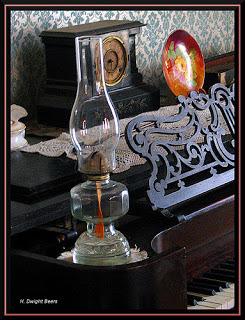 photo credit: h_dwight_beers via photopin ccI couldn’t just make this stuff up. I had to make it as accurate to the times as possible because this furniture is going to do some weird stuff that isn’t based on fact. Everything described in great detail in the book is based on real objects, including the owl bowl, John’s desk and chair, the bizarre dishes and glowing decanters, the cabinets with windy appendages, and the mirror with the woman flowing into a metallic wave of wind and butterflies. Check out the Art Nouveau style HERE!
photo credit: h_dwight_beers via photopin ccI couldn’t just make this stuff up. I had to make it as accurate to the times as possible because this furniture is going to do some weird stuff that isn’t based on fact. Everything described in great detail in the book is based on real objects, including the owl bowl, John’s desk and chair, the bizarre dishes and glowing decanters, the cabinets with windy appendages, and the mirror with the woman flowing into a metallic wave of wind and butterflies. Check out the Art Nouveau style HERE!
Insanity! Emeline’s hallucinations are not based on a factual mental disorder but a dramatization of the common disorder of the late 19th century and early 20th century called hysteria. This condition is most well known from the literary short story The Yellow Wallpaper, which was an inspiration for A
White Room. At this time period psychology was becoming well known and popular. Hysteria was the funny disorder characterized by hundreds of different symptoms, so any kind of out-of-the-norm behavior, specifically among women, could lead to a diagnosis of hysteria. The causes of hysteria were also wide and varied – the simplest being too much or too little stimulation/stress – and the most bizarre being wild theories of female organs (usually the uterus) floating unrestrained within the body and effecting the brain. Sexual dysfunction and dissatisfaction also came into play.
The primary cures for hysteria were the water cure (dunking or resting in hot and cold baths) and sensory deprivation, meaning bed rest and absolutely no mental, emotional, or other stimulation. This is the cure that drove some women, and Emeline Dorr in my novel, deeper into insanity because they were expected to lay in bed and do nothing for long periods of time. When sexual issues were considered an issue, manual and electric stimulation were used to release the “nervous tension” and at times the goal was to produce an orgasm.
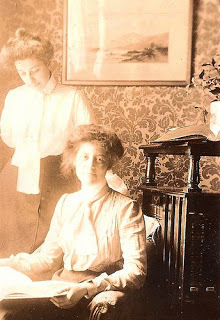 photo credit: rockcreek via photopin ccHysteria in women was often a reflection of various stressors occurring in the domestic realm during this time period, i.e. women were entering the workforce and seeking independence for the first time, but society still needed women in the domestic sphere in order to provide food, clothing, sanitation, basic education, religious guidance, and order to the family. However, at the turn of the century factory production, new technology, and new trends were changing the face of domesticity, which allowed for women to leave the home for the first time.
photo credit: rockcreek via photopin ccHysteria in women was often a reflection of various stressors occurring in the domestic realm during this time period, i.e. women were entering the workforce and seeking independence for the first time, but society still needed women in the domestic sphere in order to provide food, clothing, sanitation, basic education, religious guidance, and order to the family. However, at the turn of the century factory production, new technology, and new trends were changing the face of domesticity, which allowed for women to leave the home for the first time.
Still, society at large did not recognize these changes as they were occurring. Usually, the women diagnosed with hysteria were rebelling against traditional domestic roles in some form or another – many were trying to gain independence, were sexually promiscuous (which could be a minimum of one partner outside of marriage), or were accused of lesbianism. Those are the most obvious circumstances, but all kinds of women with all kinds of symptoms were diagnosed.
The idea of professionalizing medicine and eradicating midwives and unlicensed nurses was a real movement at the end of the 19th century and beginning of the 20thcentury. Hunting down abortionists like witches was also a very real legal movement. When caught male investigators would interrogate the people involved and force them to describe information about the medical procedure involving a woman’s genitalia. At the time, this was something people did not talk about openly, so those involved felt degraded, mortified, and sometimes even traumatized.
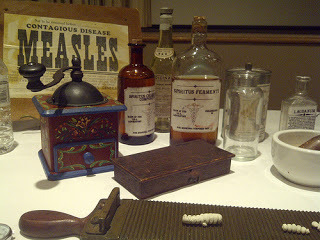 photo credit: Robert T Bell via photopin ccThe dying confession described in my novel was the one exception to the hearsay rule. It allowed for testimonies given by women before they died from an abortion to be held up as firm as a live testimony in court. Investigators pushed women who had abortions to give up the abortionist because it could be used as a definitive testimony in court if the woman did not survive.
photo credit: Robert T Bell via photopin ccThe dying confession described in my novel was the one exception to the hearsay rule. It allowed for testimonies given by women before they died from an abortion to be held up as firm as a live testimony in court. Investigators pushed women who had abortions to give up the abortionist because it could be used as a definitive testimony in court if the woman did not survive.
These are just some of the larger historical ideas in A White Room,but almost every detail in the book has been researched and tailored to the times, from the clothing, speech, etiquette, women at college, mourning rituals, dinner party procedure, home features, medical procedures, medical ailments, etc. Even some of the nursing Emeline conducts is based on accounts by female nurses at the time. Emeline’s lack of knowledge about sex and the idea that no one would tell her, so she would just find out on her wedding night is based on accounts given by women in letters and journals at the time.
The history of men and women at the turn of the century is extremely intriguing because it wasn’t just the beginning of a new century, it was also the beginning of many major changes in the world. Within a decade the New Woman of the 1920s would appear; technology would be on the rise with electricity, phones, and airplanes; not to mention World War, and so much more. I hope everyone gets a kick out of how fact weaves into fiction in this crazy book.
Sign Up for the scoop you won't find online!
I spent six months conducting the initial research for A White Room and continued that research whenever uncertainties and curiosities arose. Anytime I work on the book, I end up looking up historical facts to make sure I am not missing anything.
 photo credit: jondresner via photopin ccLet’s start with setting. A White Room is set in Labellum, Missouri, which is a fictional town I made up, but it’s a town inspired by Hannibal, Missouri – Mark Twain (Samuel Clemens) and Titanic’s Molly Brown came from Hannibal. It’s believed Mark Twain set his Huckleberry Finn and Tom Sawyer novels in Hannibal although he did not name the town that in the books. Mark Twain visited Hannibal up until he died. The last time he visited was 1902.
photo credit: jondresner via photopin ccLet’s start with setting. A White Room is set in Labellum, Missouri, which is a fictional town I made up, but it’s a town inspired by Hannibal, Missouri – Mark Twain (Samuel Clemens) and Titanic’s Molly Brown came from Hannibal. It’s believed Mark Twain set his Huckleberry Finn and Tom Sawyer novels in Hannibal although he did not name the town that in the books. Mark Twain visited Hannibal up until he died. The last time he visited was 1902.Originally, my novel contained a scene where my main character Emeline Dorr bumps into a man named Samuel Clemens. This was my little shout out to Mark Twain, but after I decided to change the name of the town, it seemed better to remove it from the final manuscript. Mark Twain’s family home, a white house along with a white picket fence (believed to be the fence painted by Huck and Tom), still stands today. Using local history books, photos, and Google Earth, I did my best to recreate historical Hannibal, Missouri. After so much effort to accurately describe Hannibal, I ultimately decided to rename the town because the story involves the town and nothing like what happens in the story ever happened in Hannibal that I know of and it could be taken as offensive.
 Photo from Dave's Victorian House SiteThe reason I chose Hannibal in the first place wasn’t because of the town, but because of a house. The house described in A White Room is a real home called the Doyle-Mounce house, which was built in 1880 and is located in Hannibal. It’s called the Doyle-Mounce house because it was built by a Mr. Doyle and altered by a Mr. Mounce. In the book I describe the real exterior of the house, but the inside is all a fabrication of my own because there are no photos of the inside available online. I chose this house because I didn’t know how to describe a Victorian home, and I wanted something that was dark and creepy, but I also wanted it to be white to reflect the overall concept of a white room. Long behold this house screamed out at me like a massive beast. It wanted to be a star!
Photo from Dave's Victorian House SiteThe reason I chose Hannibal in the first place wasn’t because of the town, but because of a house. The house described in A White Room is a real home called the Doyle-Mounce house, which was built in 1880 and is located in Hannibal. It’s called the Doyle-Mounce house because it was built by a Mr. Doyle and altered by a Mr. Mounce. In the book I describe the real exterior of the house, but the inside is all a fabrication of my own because there are no photos of the inside available online. I chose this house because I didn’t know how to describe a Victorian home, and I wanted something that was dark and creepy, but I also wanted it to be white to reflect the overall concept of a white room. Long behold this house screamed out at me like a massive beast. It wanted to be a star!The furniture described in A White Room is also based on real historical furniture from the times – primarily from the Art Nouveau trend, which incorporated living creatures and winding appendages into the art, furniture, and architecture. I combed through tons of Victorian furniture books and antique guides searching for pieces to go in Emeline’s home and eventually come to life in her hallucinations.
 photo credit: h_dwight_beers via photopin ccI couldn’t just make this stuff up. I had to make it as accurate to the times as possible because this furniture is going to do some weird stuff that isn’t based on fact. Everything described in great detail in the book is based on real objects, including the owl bowl, John’s desk and chair, the bizarre dishes and glowing decanters, the cabinets with windy appendages, and the mirror with the woman flowing into a metallic wave of wind and butterflies. Check out the Art Nouveau style HERE!
photo credit: h_dwight_beers via photopin ccI couldn’t just make this stuff up. I had to make it as accurate to the times as possible because this furniture is going to do some weird stuff that isn’t based on fact. Everything described in great detail in the book is based on real objects, including the owl bowl, John’s desk and chair, the bizarre dishes and glowing decanters, the cabinets with windy appendages, and the mirror with the woman flowing into a metallic wave of wind and butterflies. Check out the Art Nouveau style HERE! Insanity! Emeline’s hallucinations are not based on a factual mental disorder but a dramatization of the common disorder of the late 19th century and early 20th century called hysteria. This condition is most well known from the literary short story The Yellow Wallpaper, which was an inspiration for A
White Room. At this time period psychology was becoming well known and popular. Hysteria was the funny disorder characterized by hundreds of different symptoms, so any kind of out-of-the-norm behavior, specifically among women, could lead to a diagnosis of hysteria. The causes of hysteria were also wide and varied – the simplest being too much or too little stimulation/stress – and the most bizarre being wild theories of female organs (usually the uterus) floating unrestrained within the body and effecting the brain. Sexual dysfunction and dissatisfaction also came into play.
The primary cures for hysteria were the water cure (dunking or resting in hot and cold baths) and sensory deprivation, meaning bed rest and absolutely no mental, emotional, or other stimulation. This is the cure that drove some women, and Emeline Dorr in my novel, deeper into insanity because they were expected to lay in bed and do nothing for long periods of time. When sexual issues were considered an issue, manual and electric stimulation were used to release the “nervous tension” and at times the goal was to produce an orgasm.
 photo credit: rockcreek via photopin ccHysteria in women was often a reflection of various stressors occurring in the domestic realm during this time period, i.e. women were entering the workforce and seeking independence for the first time, but society still needed women in the domestic sphere in order to provide food, clothing, sanitation, basic education, religious guidance, and order to the family. However, at the turn of the century factory production, new technology, and new trends were changing the face of domesticity, which allowed for women to leave the home for the first time.
photo credit: rockcreek via photopin ccHysteria in women was often a reflection of various stressors occurring in the domestic realm during this time period, i.e. women were entering the workforce and seeking independence for the first time, but society still needed women in the domestic sphere in order to provide food, clothing, sanitation, basic education, religious guidance, and order to the family. However, at the turn of the century factory production, new technology, and new trends were changing the face of domesticity, which allowed for women to leave the home for the first time.Still, society at large did not recognize these changes as they were occurring. Usually, the women diagnosed with hysteria were rebelling against traditional domestic roles in some form or another – many were trying to gain independence, were sexually promiscuous (which could be a minimum of one partner outside of marriage), or were accused of lesbianism. Those are the most obvious circumstances, but all kinds of women with all kinds of symptoms were diagnosed.
The idea of professionalizing medicine and eradicating midwives and unlicensed nurses was a real movement at the end of the 19th century and beginning of the 20thcentury. Hunting down abortionists like witches was also a very real legal movement. When caught male investigators would interrogate the people involved and force them to describe information about the medical procedure involving a woman’s genitalia. At the time, this was something people did not talk about openly, so those involved felt degraded, mortified, and sometimes even traumatized.
 photo credit: Robert T Bell via photopin ccThe dying confession described in my novel was the one exception to the hearsay rule. It allowed for testimonies given by women before they died from an abortion to be held up as firm as a live testimony in court. Investigators pushed women who had abortions to give up the abortionist because it could be used as a definitive testimony in court if the woman did not survive.
photo credit: Robert T Bell via photopin ccThe dying confession described in my novel was the one exception to the hearsay rule. It allowed for testimonies given by women before they died from an abortion to be held up as firm as a live testimony in court. Investigators pushed women who had abortions to give up the abortionist because it could be used as a definitive testimony in court if the woman did not survive.These are just some of the larger historical ideas in A White Room,but almost every detail in the book has been researched and tailored to the times, from the clothing, speech, etiquette, women at college, mourning rituals, dinner party procedure, home features, medical procedures, medical ailments, etc. Even some of the nursing Emeline conducts is based on accounts by female nurses at the time. Emeline’s lack of knowledge about sex and the idea that no one would tell her, so she would just find out on her wedding night is based on accounts given by women in letters and journals at the time.
The history of men and women at the turn of the century is extremely intriguing because it wasn’t just the beginning of a new century, it was also the beginning of many major changes in the world. Within a decade the New Woman of the 1920s would appear; technology would be on the rise with electricity, phones, and airplanes; not to mention World War, and so much more. I hope everyone gets a kick out of how fact weaves into fiction in this crazy book.
Sign Up for the scoop you won't find online!
Published on June 29, 2016 14:55
Become a VIP Reader Today!
Sign Up Now!
1. Be the First to Know About Free-bees, Giveaways, and Discounts in addition to receiving Email List Only Deals and Prizes!
2. Read Behind the Scenes Material from Published & In-Progress Sign Up Now!
1. Be the First to Know About Free-bees, Giveaways, and Discounts in addition to receiving Email List Only Deals and Prizes!
2. Read Behind the Scenes Material from Published & In-Progress Books and Provide Feedback!
3. Get the Chance to Become a Test Reader and Receive an Advanced Copy for Free!
4. Be the First to Know About New Releases!
5. Learn more about me and my books, while also learning the how-tos of writing and publishing through my experiences.
Sign Up Now!
Email Address
...more
1. Be the First to Know About Free-bees, Giveaways, and Discounts in addition to receiving Email List Only Deals and Prizes!
2. Read Behind the Scenes Material from Published & In-Progress Sign Up Now!
1. Be the First to Know About Free-bees, Giveaways, and Discounts in addition to receiving Email List Only Deals and Prizes!
2. Read Behind the Scenes Material from Published & In-Progress Books and Provide Feedback!
3. Get the Chance to Become a Test Reader and Receive an Advanced Copy for Free!
4. Be the First to Know About New Releases!
5. Learn more about me and my books, while also learning the how-tos of writing and publishing through my experiences.
Sign Up Now!
Email Address
...more
- Stephanie Carroll's profile
- 30 followers



